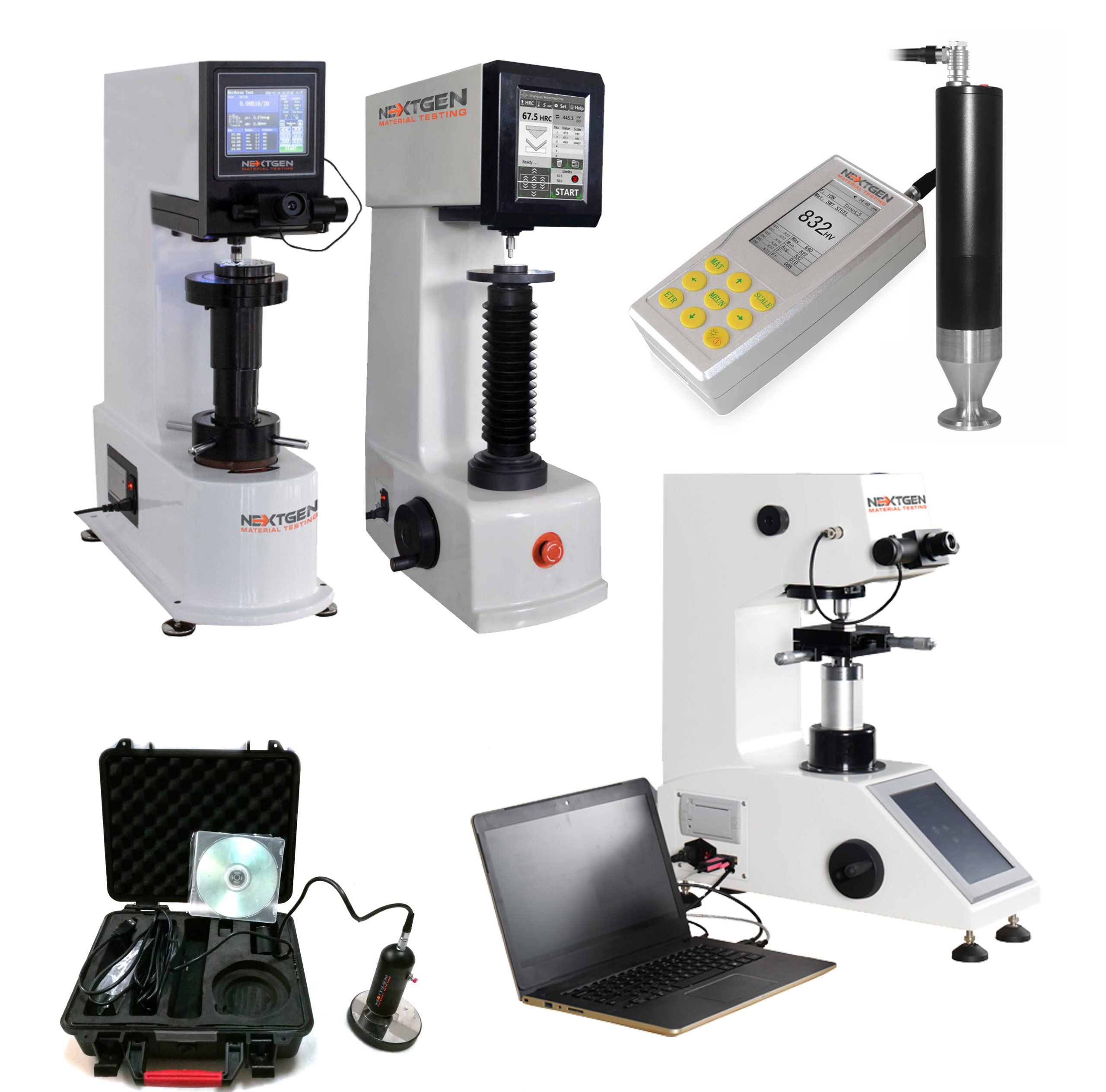
Hardness test machines are used to determine the hardness of a material, which is a measure of its resistance to deformation. There are several different types of hardness test machines, each based on a specific testing method.
Some of the most common types of Hardness test Machines include:

Rockwell Hardness Tester: This is one of the most widely used hardness testing methods. It involves pressing a diamond-tipped or hardened steel ball indenter into the material, followed by the application of a minor load and a major load. The depth of penetration of the indenter under the major load is used to calculate the Rockwell hardness value.
Brinell Hardness Tester: In this method, a hard steel or carbide ball is pressed into the material's surface using a specified load. The diameter of the resulting impression is measured, and the hardness value is calculated using the Brinell hardness formula.
Vickers Hardness Tester: This method uses a pyramid-shaped diamond indenter to create an impression on the material's surface. The diagonals of the resulting impression are measured, and the hardness value is calculated using the Vickers hardness formula.
Knoop Hardness Tester: Similar to the Vickers test, the Knoop hardness test uses a diamond indenter, but in the shape of a rhombic-based pyramid. It is often used for testing thin materials or small regions.
Shore Hardness Tester: This type of tester is used for measuring the hardness of elastomers, plastics, and other soft materials. It involves measuring the depth of penetration of a specified indenter into the material's surface under a specific load.
Leeb Hardness Tester: Leeb hardness testers are portable devices commonly used for measuring the hardness of metals, particularly in situations where the material cannot be easily brought to a stationary testing machine. The tester uses a rebound method, where a probe impacts the material's surface and the rebound velocity is used to calculate hardness.
Ultrasonic Hardness Tester: This method uses ultrasonic waves to measure the hardness of a material by evaluating the material's elastic properties. It is often used for testing thin materials, coatings, and heat-affected zones.
Dynamic (Scleroscope) Hardness Tester: This tester involves dropping a diamond-tipped hammer onto the material's surface and measuring the rebound height. The hardness value is then calculated based on the energy loss during impact.
These are some of the main types of hardness test machines, each catering to different types of materials, shapes, and testing requirements. The choice of the appropriate hardness test method depends on factors such as the material's properties, the required accuracy, the shape of the specimen, and the testing conditions.
Thank You